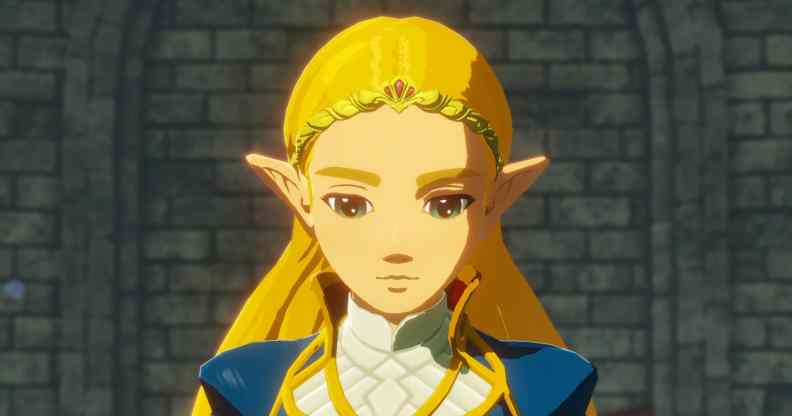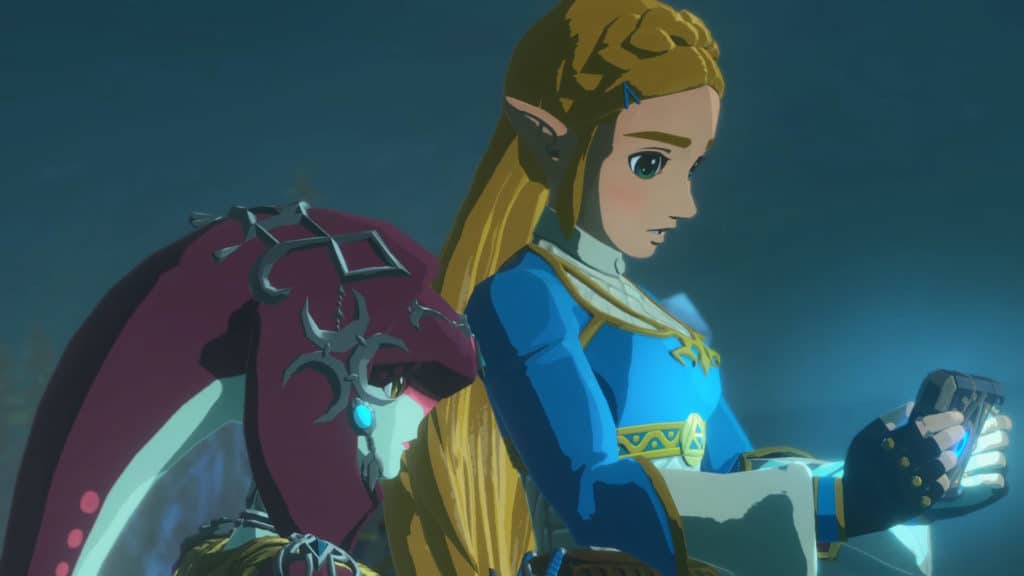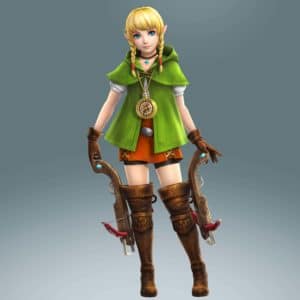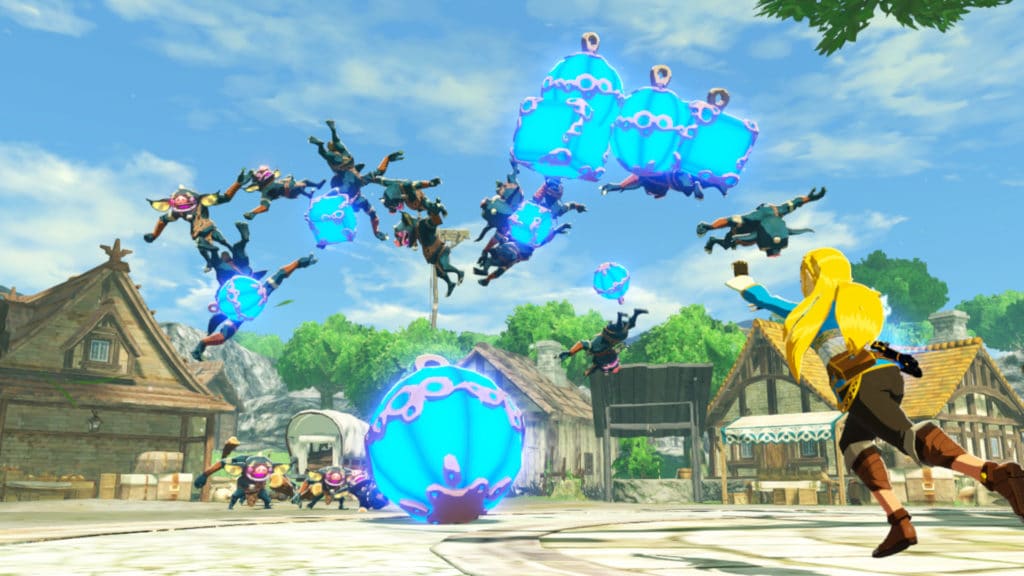Hyrule Warriors: Age of Calamity puts Zelda front and centre. Why are the main games so far behind?

Hyrule Warriors: Age of Calamity. (Nintendo)
Hyrule Warriors: Age of Calamity. (Nintendo)
“Willst thou get the girl? Or play like one?” This was the infamous tagline in the advert for Nintendo’s 1998 release The Legend of Zelda: Ocarina of Time.
It was a blatant use of misogyny that reinforced tired stereotypes and undermined the many female game players who are fans of the series.
But what if you really could play as the girl? And what if they were far more powerful than Link?
Fans have been calling for a female hero in the Zelda series for some time, with speculation reaching a peak before the release of 2018’s Breath of the Wild. Series producer Eiji Aonuma was purposefully vague about the lead character in the run up to the release, leading to many fan theories.
Yet in an article on Kotaku, Aonuma explained: “My intention was to say this isn’t done and there may be changes coming to that. I in no way had intention of leading people into believing Link was female.”
“(It) would mess with the balance of the Triforce”
When pressed further on whether a Zelda game could have a female lead, he responded: “The Triforce is made up of Princess Zelda, Ganon and Link. Princess Zelda is obviously female. If we made Link a female we thought that would mess with the balance of the Triforce. That’s why we decided not to do it.”
These character roles feel somewhat set in stone and leave little room for progression or experimentation. Yet it is Princess Zelda whose name is in the title and who is so often central to the stories the games tell.
Over the course of the series she’s been given more agency: a mere helpless princess in the early games, Ocarina of Time saw her dressing up as Sheik to escape the clutches of Ganon and aid the hero, and in Skyward Sword she was one step ahead of the player on her own quest. Breath of the Wild, meanwhile, is more Zelda’s narrative than Link’s: a coming of age story that shows her awakening her true powers. So, a playable Zelda next?
Link, meanwhile, is little more than an androgynous cypher for the player. Notoriously mute throughout the series, he exists only to embark on a princess-saving quest and has – let’s face it – little personality of his own.

Hyrule Warriors: Age of Calamity. (Nintendo)
It’s in the Hyrule Warriors games, though, that this fantasy of a female hero becomes a reality. Taking cue from the Musou style of warrior games popularised by the Dynasty Warriors series, both Hyrule Warriors and its 2020 follow up Age of Calamity see a host of Zelda characters fighting on huge battlefields against hordes of enemies, with puzzle solving and dungeon exploration swapped for flashy combat and battle strategy.
For the most part they serve as fan service, allowing players to embody key figures from their favourite titles in fantasy battles the main games do not allow for.
“Hyrule Warriors introduced a literal female Link”
That also means putting female characters front and centre. And not just the titular princess, but the likes of Sheik, Ruto the Zora princess, Midna the Twilight imp and Fi from Skyward Sword. Each comes with their own fighting style, using magic or weapons to put a spin on Link’s traditional arsenal of bombs, bows and the hookshot.
What’s more, the 3DS and Switch re-releases of Hyrule Warriors introduced a literal female Link after a positive response from fans to her concept art. As a side story to the main plot, farmer Linkle believes she is the latest incarnation of the hero and, dressed in typical green garb, she ventures to Hyrule Castle to protect the princess with her dual crossbows. Her story is presented in a slapstick way, though, and lacks the grave grandeur of the main plot.
She is not just a woman in Link’s clothing, but equally her story is a novelty extra that lacks real development.

Linkle – Hyrule Warriors. (Nintendo)
The latest in the Hyrule Warriors series, Age of Calamity, is the strongest argument yet for a game centred on Zelda herself. A prequel to the popular Breath of the Wild, it reimagines the fate of Hyrule and puts Zelda – not Link – at the heart of the story.
Sure, you begin the game as Link and he’s still considered the hero. But as you amass a team of champions (and more) to defeat Calamity Ganon, it’s more of a team effort than the mainline games and Zelda is at the helm.
Her story follows a similar thread to Breath of the Wild: as daughter to the king, her sworn duty is to protect the kingdom and awaken her true power. In Age of Calamity, those powers are awakened earlier and control given to the player to unleash on the battlefield.
Zelda is by far the most powerful character in the game and using the bow of light to shatter enemies is a cathartic release not only for the player, but within Zelda’s storyline too. Beyond the versatile but basic and mute Link, Age of Calamity is Zelda’s story of finding herself to save her land.
And that’s before you include other playable female characters. The young Impa has the power to summon clones of herself; Zora princess Mipha has healing water abilities; and Gerudo warrior Urbosa can wield lightning. In your expanding team of warriors, these are just three integral female characters equal to the male hero.

Age of Calamity. (Nintendo)
It’s in the Hyrule Warriors games, then, that we get the fantasy of a female hero – be that a female substitute to Link, Zelda herself, or another character entirely. And while these games are considered non-canon within the Zelda universe, they are an experiment that disproves Aonuma’s comments on messing with the balance of the Triforce.
Conversely, the mute hero dressed in green and wielding the Master Sword is an iconic part of the Zelda series. Would Zelda feel like Zelda without this? Or could a playable princess in addition to Link offer a welcome middle ground? The announcement video to the Breath of the Wild sequel saw Zelda alongside Link on his latest quest: could the two adventure together to defeat Ganon, with both as playable characters?
It does seem unlikely following Aonuma’s comments that we won’t see a female hero in a mainline Zelda title. But with the Breath of the Wild sequel due soon, perhaps she isn’t so far away.
This article contains affiliate links, PinkNews may earn revenue if you click through and purchase products through the links.

